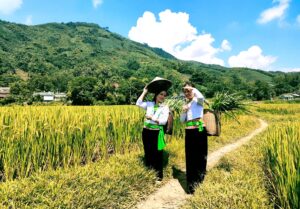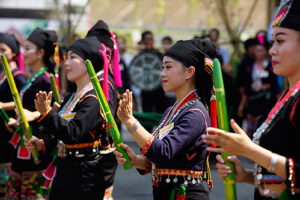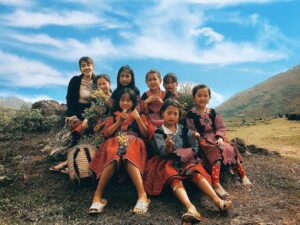The Thai Ethnic Group – A Cultural Gem of Northwestern Vietnam
The Thai ethnic group is one of the largest minority groups in Vietnam, primarily inhabiting the northwestern provinces such as Son La, Dien Bien, Lai Chau, and Nghe An. They belong to the Tai-Kadai language family and share cultural and linguistic ties with other Tai-speaking groups in Southeast Asia. Having migrated to Vietnam centuries ago, the Thai settled in fertile valleys along rivers and streams, developing a strong agricultural tradition. The Thai are divided into two main subgroups: Thai Den (Black Thai) and Thai Trang (White Thai), with differences in clothing styles, customs, and religious practices.
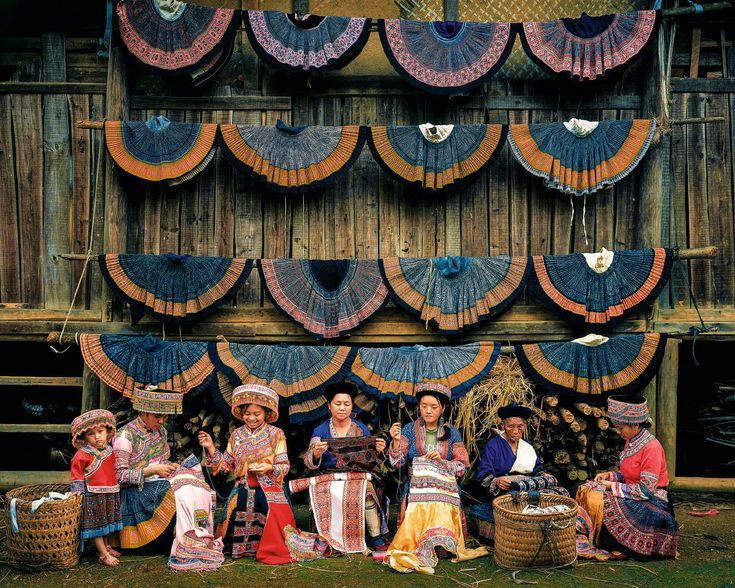
Historical Origins and Migration
Historically, the Thai people originated from Southeast Asia and their ancestors have been present in Vietnam for a long time. The Thai people in Vietnam are seen as a community with various local groups, and their origins and presence in the country are not entirely the same. According to ethnologists, the Thai in Vietnam are mainly divided into two main subgroups: the Black Thai and the White Thai.
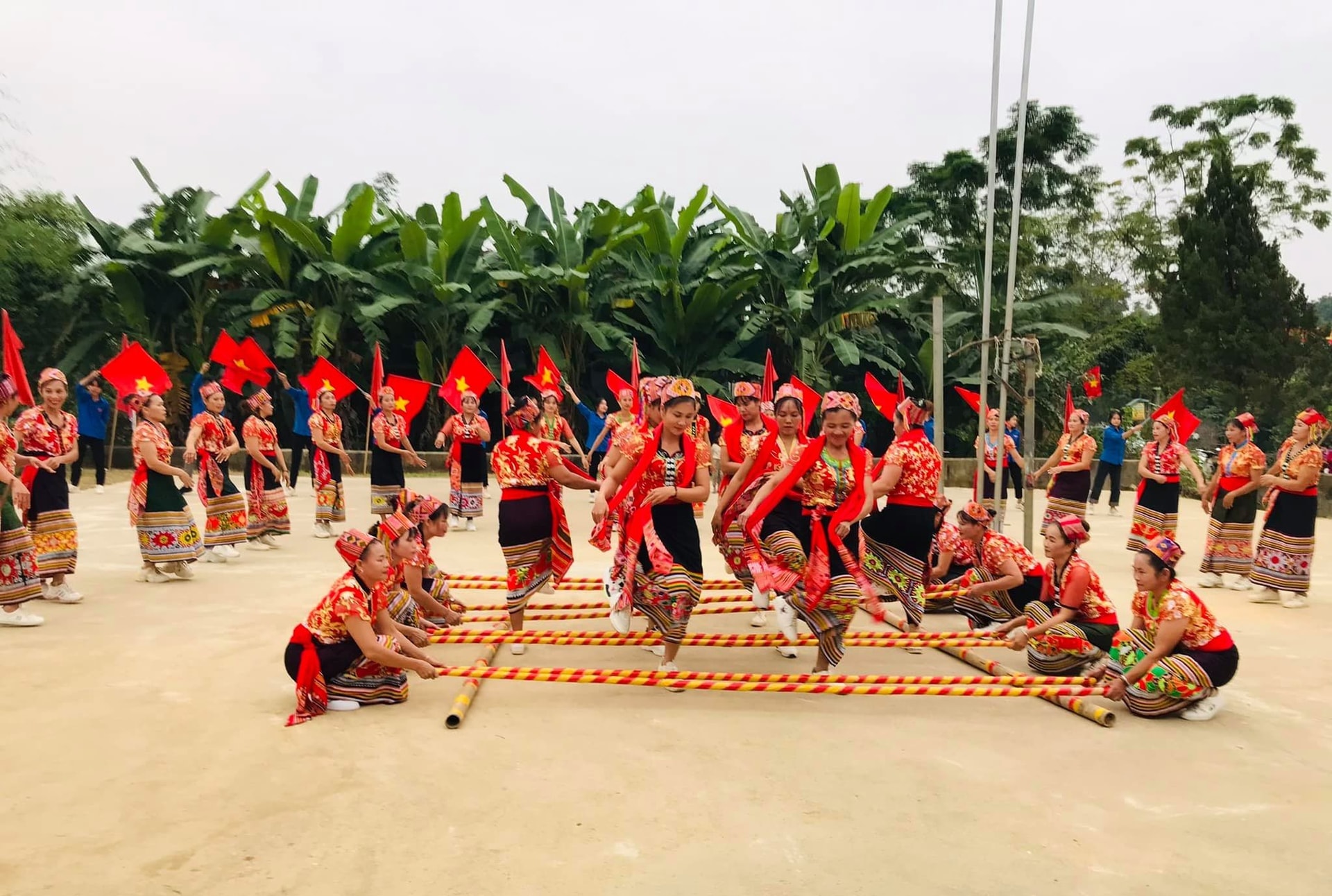
Distribution and Population in Vietnam
The Thai ethnic group inhabits several provinces in Vietnam, including Hoa Binh, Lai Chau, Dien Bien, Son La, Lao Cai, Yen Bai, Thanh Hoa, and Nghe An. In the 1990s, migration expanded their presence to other regions, including the Central Highlands. As of the 2019 survey of 53 ethnic minorities, the Thai population is 1,820,950, with almost equal gender distribution. They speak a language belonging to the Tai-Kadai language group, which is shared by other groups in Southeast Asia.
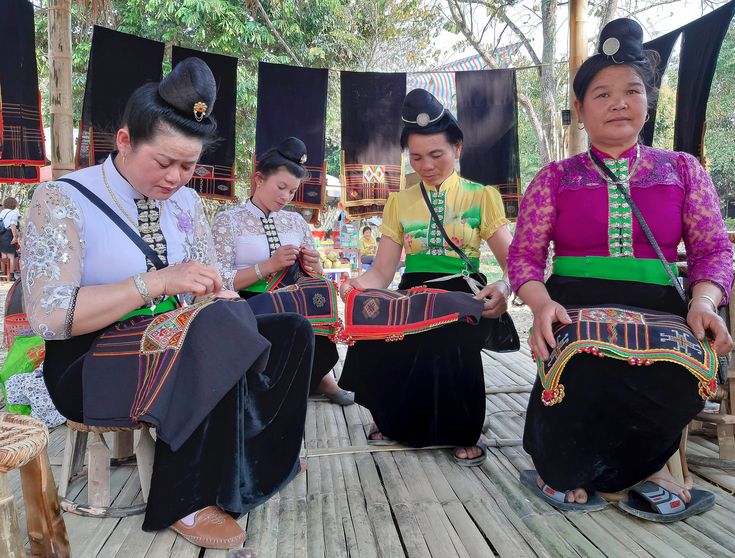
Stilt Houses: A Cultural Symbol
The culture of the ethnic groups in the Northwestern region of Vietnam is clearly reflected in their architecture, with each ethnic group having its own unique architectural style, creating the distinctive features of each region. The houses here are typically built using natural materials such as wood, bamboo, rattan, or reed, and are mainly stilt houses. These stilt houses not only provide warmth in the winter but also keep cool in the summer, thanks to their smart design and suitability for the highland climate. A common feature of the houses in the Northwestern region is that they are usually built on hill slopes or mountainsides, with the floor elevated from the ground, helping to avoid floods and creating a cool, airy space. The stilt house model has increasingly become an attractive destination for tourists who want to explore the life and unique culture of the people in the Northwestern region.
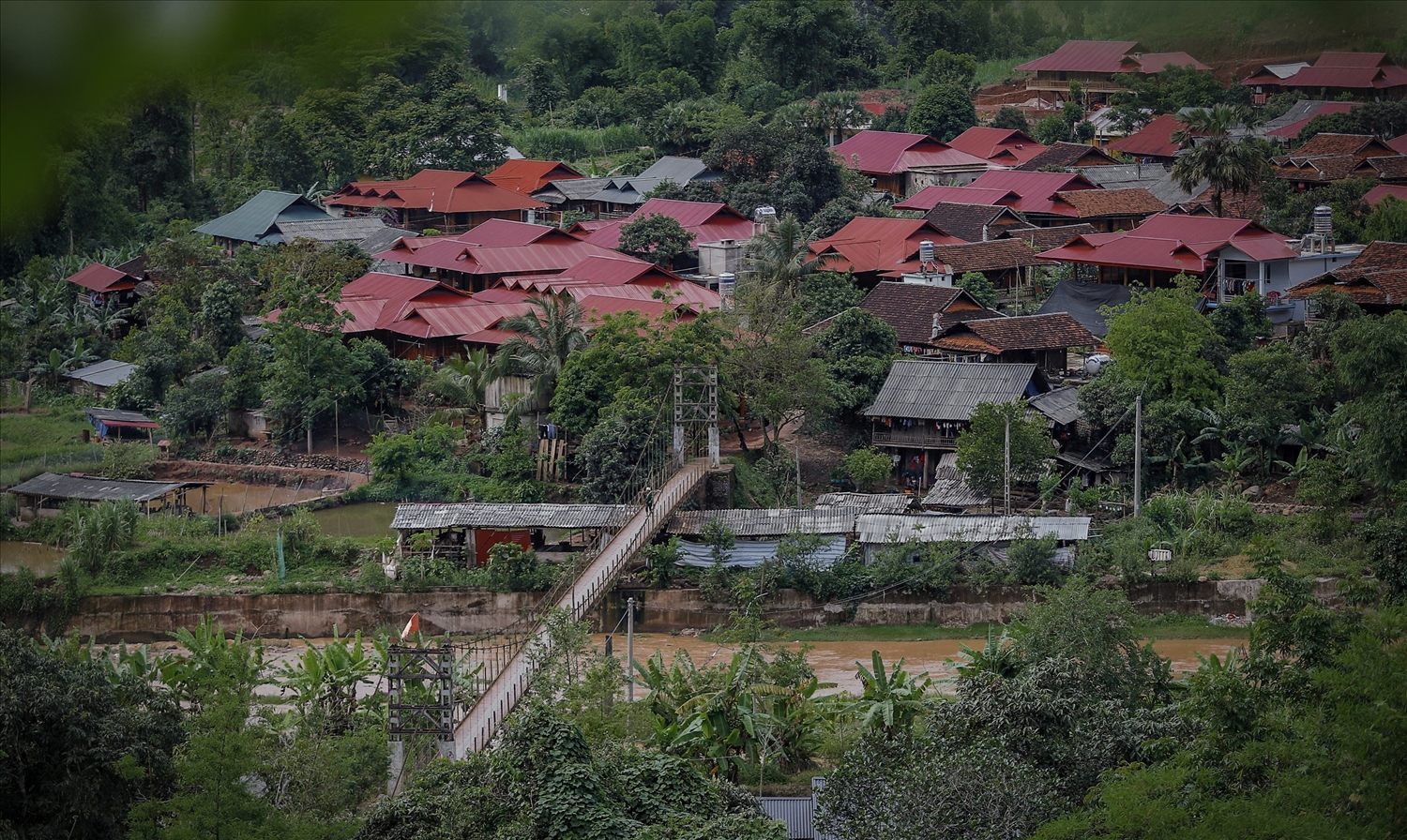
One of the most distinctive features of the Thai people is their stilt houses (nha san), which are built on wooden pillars to adapt to the mountainous terrain and prevent flooding. These houses have spacious interiors designed for communal living and social gatherings. The architecture of their stilt houses differs between the two subgroups: the Black Thai houses are typically characterized by a curved roof resembling a turtle shell, while White Thai houses often have rectangular layouts with wooden railings around the porch. Stilt houses are a significant cultural feature, representing the Thai people’s connection to the land, nature, and their spiritual beliefs. The stairs of the stilt houses hold cultural significance, symbolizing religious values and traditions regarding gender, childbirth, and family structure.
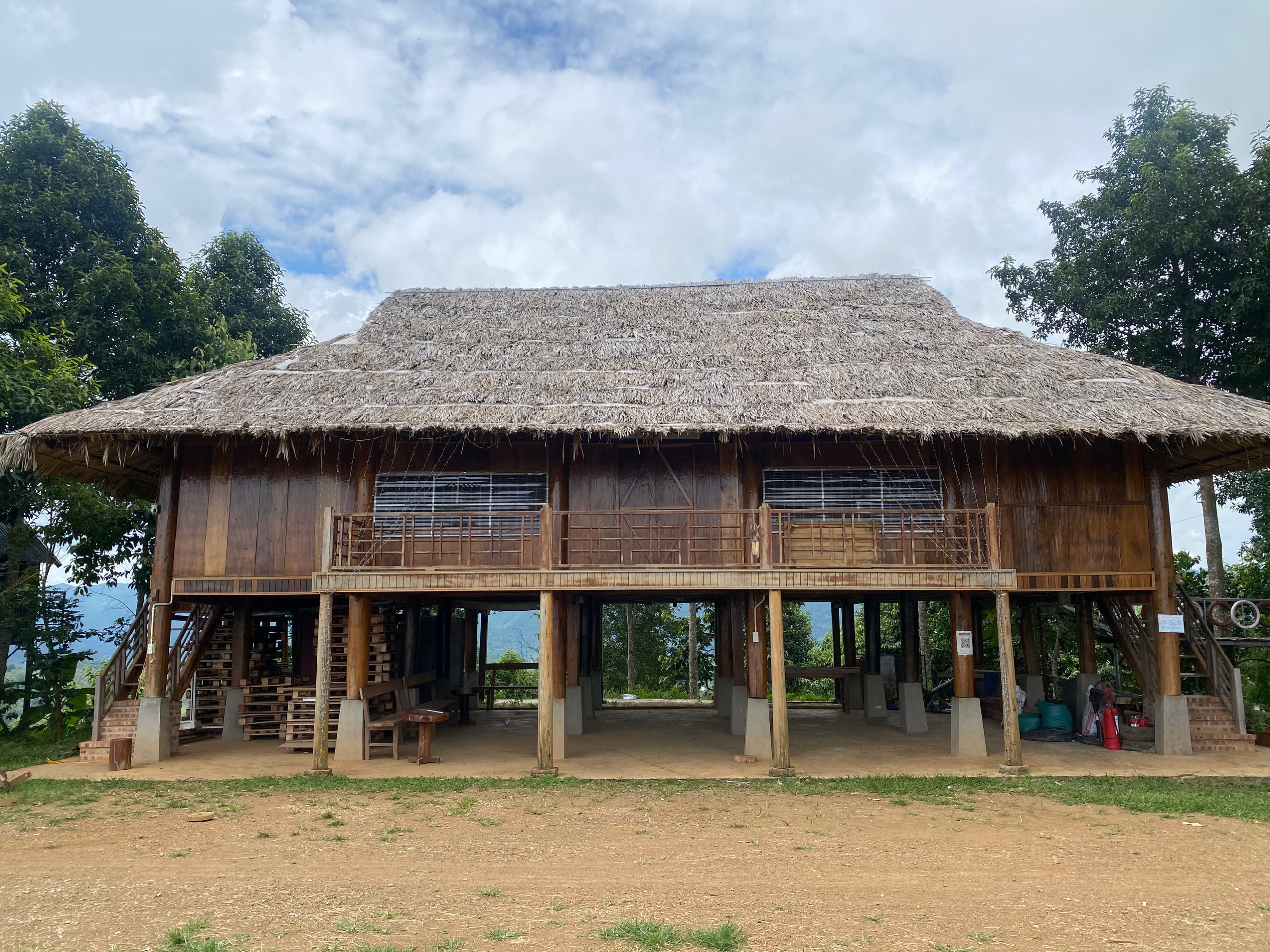
The stilt houses of the Thai people are typically made of wood and bamboo, with roofs covered in palm or thatch leaves. These stilt houses are divided into several sections, with each section serving a specific function. The Thai stilt house always has an odd number of sections, and the two gables — known as “tụp cống” — curve like the shell of a turtle, associated with the legend of the creation of the world, where the turtle god “Pua Tấu” taught the Thai people how to build houses in the shape of a standing turtle.
The traditional stilt houses of the Thai ethnic group are made from natural materials such as wood, bamboo, rattan, cane, vines, thatch, and palm leaves. The most meticulous process in building a stilt house is the preparation of the wood. This is because the stilt house requires high-quality, durable wood that can withstand the natural environment and bear weight. Wood is used in most of the key structures of the traditional Thai stilt house, including the columns, beams, crossbeams, and rafters. The wood used for the columns is typically large and is harvested in the winter to avoid termites.
For the beams and crossbeams, lighter wood can be used, which is not as hard as the wood used for the columns but must be resistant to termites and insects. The process of extracting and transporting the wood requires the cooperation of individuals in the village community. It is through this preparation process that the Thai people’s spirit of mutual assistance and support within their community is clearly demonstrated.
The Thai people believe that odd numbers are lucky, so their house structures are typically built with three or five sections, and the wealthier households may have seven sections. The total number of windows and doors must also be an odd number. The two staircases at the two ends of the house are built with an odd number of steps — 7, 9, 11, or 13 steps. The house is divided into three levels: the first level, which is the space under the house, is used for storing firewood and farming tools; the second level, the main floor, is where the family lives and conducts daily activities; and the third level, the attic, is used to store valuable items.
Cultural Traditions and Social Life
The Thai are known for their vibrant folk culture, with a strong tradition of oral literature, epic poems, and ancient legends. Their most famous cultural expression is the Xoe dance, which symbolizes unity and joy, often performed during festivals and celebrations. The Thai people’s agricultural expertise, particularly in wet rice cultivation, has made them one of the most agriculturally advanced ethnic groups in Vietnam. In addition to agriculture, they are skilled in weaving, dyeing, and embroidery, creating intricately patterned fabrics used for clothing and home decoration. The Thai are also known for their rich culinary traditions, with staples such as sticky rice, grilled foods, and “rượu cần” (a type of wine) being common.
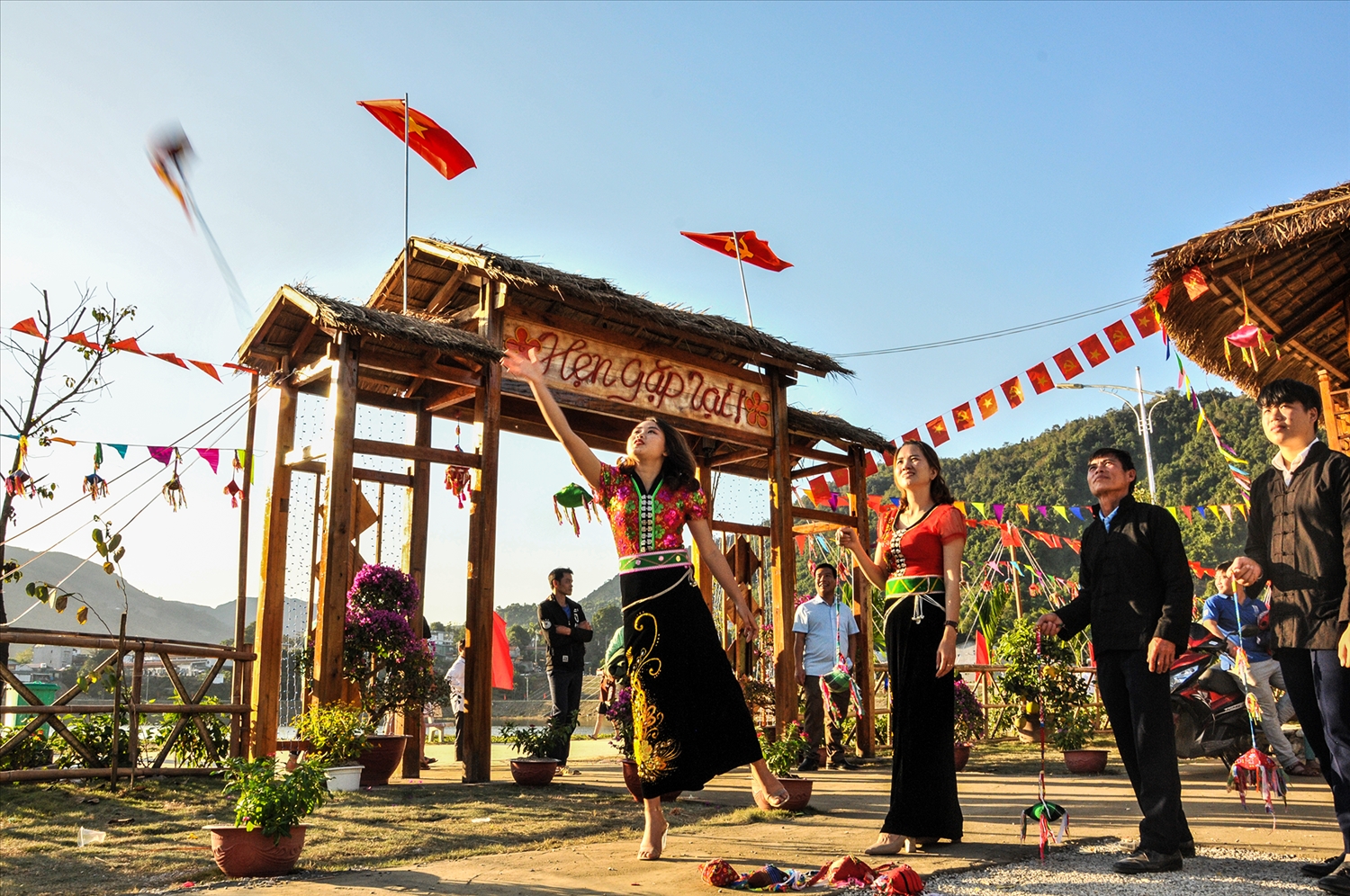
Socially, the Thai people have traditional institutions such as the “ban muong,” a community organization that resembles a pre-state form of governance, reflecting the advanced level of Thai society. The Thai practice ancestor worship, along with rituals dedicated to agricultural deities, river gods, and mountain spirits. These religious practices are intertwined with festivals and ceremonies like the “le xuong dong” (spring plowing ceremony) and “le cau mua” (rain prayer ceremony), as well as marriage and funeral rites.
Traditional Clothing and Textiles
The traditional costumes of the ethnic groups in the Northwestern region are exquisitely designed, carrying deep meanings related to beliefs, culture, and history. Each ethnic group has its own unique style of clothing, but in general, they share common characteristics such as: the use of vibrant colors like red, yellow, green, and purple; a focus on decorative details such as embroidery and embellishments with patterns; and the design of the costumes being suited to the climate and daily habits of the people.
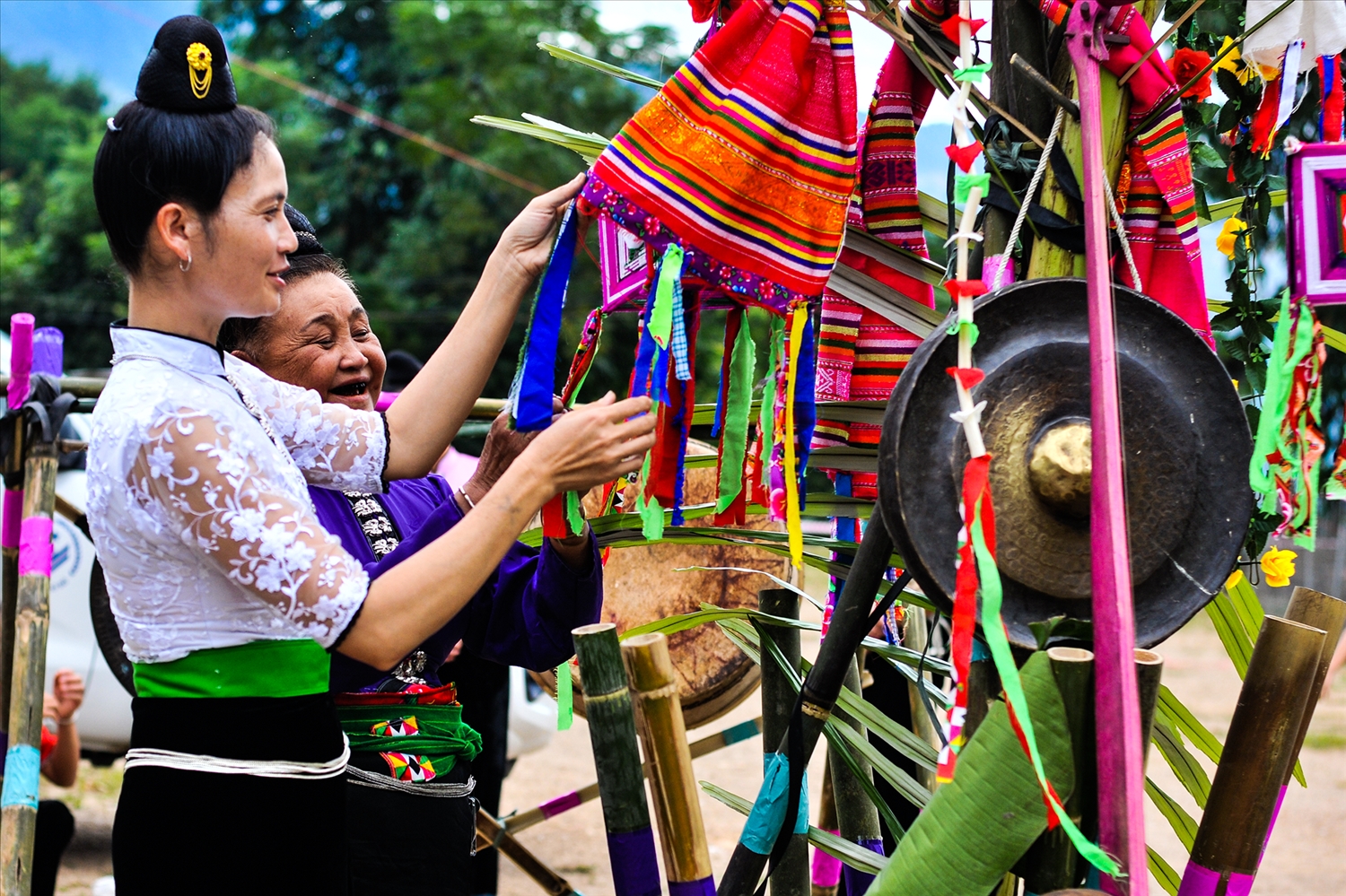
The Thai women’s costume is divided into two types: White Thai (Tay Khao) and Black Thai (Tay Dam). The costume of Thai women is praised for its simplicity, grace, and elegance. A traditional female outfit consists of: a blouse, skirt, headscarf, belt, leg wraps, and jewelry. The blouse is tightly fitted to the body, with silver buttons shaped like insects; the long black skirt, combined with the blouse, creates a soft and graceful appearance for Thai women; the belt, made of silk or cotton threads in blue, pink, or dark purple, serves both to hold up the skirt and to accentuate the outfit; the Piêu scarf is an inseparable item for Thai women, used to keep warm in winter and to provide coolness in summer. White Thai women wear a low V-neck blouse and tie their hair at the back of the head, while Black Thai women wear a high-neck blouse, with the Piêu scarf on their head, and when married, they style their hair in a bun on top of their head.
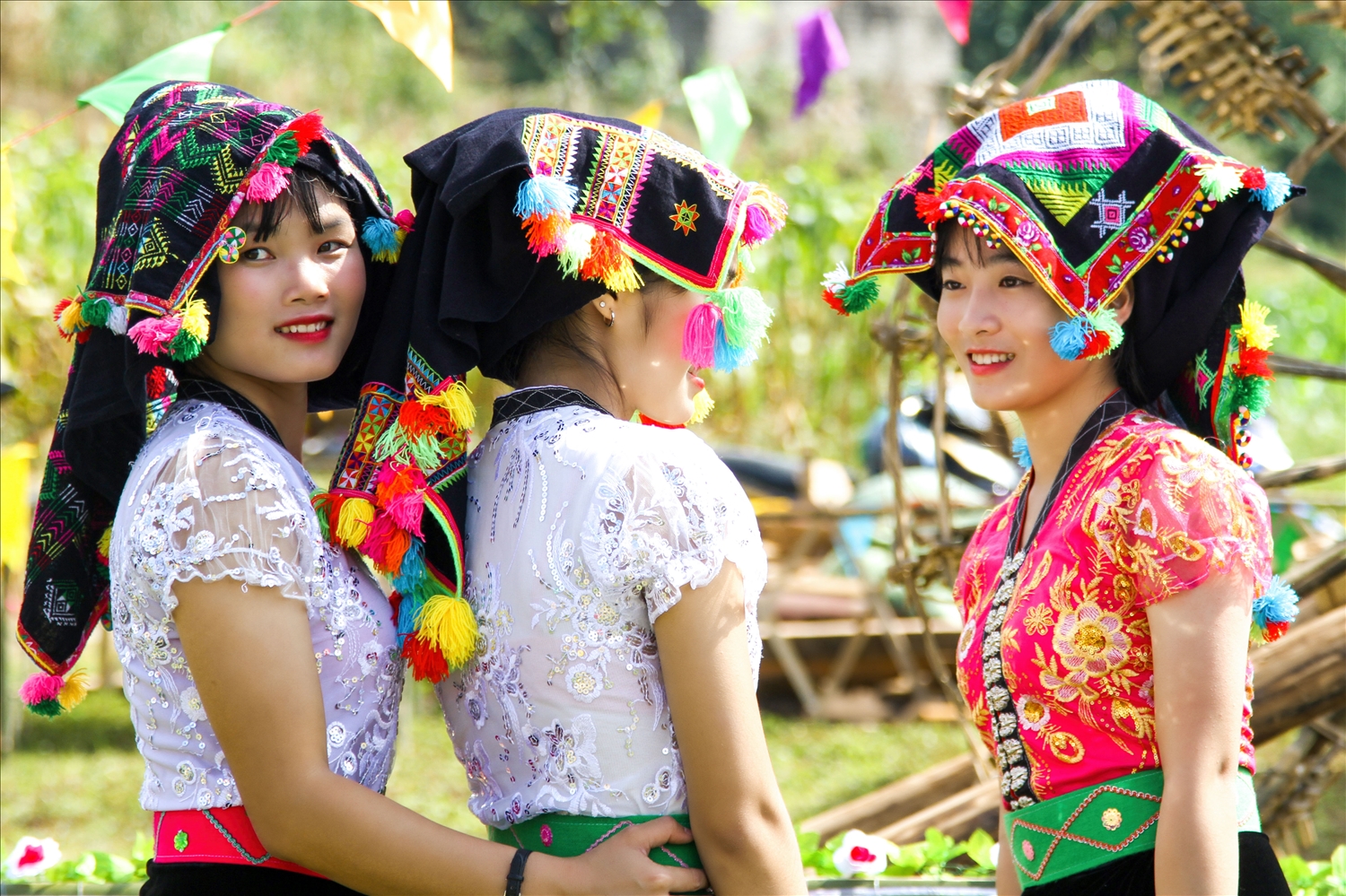
The men’s costume consists of: a shirt, trousers, a belt, and various types of scarves. There are two types of men’s shirts: short-sleeved and long-sleeved. The short shirt is made of indigo fabric, with a front slit design, either long or short sleeves, and a round collar. The buttons are made of bronze or woven fabric knots. The shirt is plain, without any decorative patterns, but during special occasions, Thai men wear a new short-sleeved shirt, with two mak may (fruit-shaped knots) peeking out at the side slits of the shirt.
Language, Literacy, and Education
In terms of education, according to the 2019 survey, 81.6% of Thai people aged 15 and older are literate in Vietnamese, and nearly all children in the Thai community attend primary school. The literacy rate for the Thai language is lower, but efforts are being made to preserve the language and culture.
Economics and Modern Adaptation
Economically, the Thai people are known for their agricultural activities, especially wet rice farming and growing various crops such as corn, soybeans, and cassava. They also engage in animal husbandry, raising livestock like pigs, cattle, and goats. In recent years, the Thai have incorporated modern farming techniques to increase productivity. Beyond agriculture, the Thai people have developed small-scale crafts such as weaving, basket-making, and blacksmithing. As tourism has grown in the region, many Thai communities have also benefited from income generated by services for tourists, trade, and other non-agricultural activities.
The Thai people’s ability to preserve their customs while adapting to modern life has made them a vital part of Vietnam’s diverse cultural heritage. Their deep-rooted cultural identity, traditional lifestyle, and contributions to agriculture and the arts make the Thai an essential element of the country’s cultural mosaic.

